First Flight of the Grumman F6F Hellcat
On 26 June 1942, a prototype of the Grumman F6F Hellcat took to the skies for the first time. She flew fine, but not fast enough per the Navy’s orders. The 1,700 hp Wright engine was replaced with the 2,000 hp Pratt & Whitney to great success. Despite the aircraft’s heavy weight, she was one of the quickest and fasting-climbing fighters of the war. The Hellcat went from design to production in record time, just over one year. The F6F began the war as a record setter, and finished the war in same fashion, with the most kills—more than 5,000—and the highest kill ratio—19 to 1—than any other Allied aircraft.
Initially conceived of as an improved version of the Grumman F4F Wildcat which had been in service since the 1930s, the Hellcat turned out to be an entirely different animal. The plane was designed with its greatest opponent, the seemingly unconquerable Mitsubishi A6M Zero, in mind. The single-engine fighter was suitable for service as a carrier-borne craft, as well as land based. Despite her heavy weight, the Hellcat proved incredibly fast with a maximum speed of about 375 miles per hour and a vastly improved climb rate. The F6F was also more heavily armed, with six staggered .50 caliber machine guns in addition to six 5-inch rockets, ideal for ground assault. Yet despite all these superpowers of the Hellcat, she was no more difficult to pilot than other planes.
- "A Navy Grumman F6F Hellcat lands on its carrier following a strike at Japanese installations in the Philippines" on 6 February 1945. Gift of Charles Ives, 2011.102
- A Hellcat prepares for takeoff. Gift In Memory of John Valdemor Peterson, 2011.228
- A group of F6F Hellcats on the deck of the USS Lexington. Gift of Charles Ives, 2011.102
- A Hellcat speeds by in a blur. Courtesy of the National Archives
- Formation of F6Fs over Japan. Gift In Memory of John Valdemor Peterson, 2011.228
- "It was a bit ungraceful, but definitely a happy landing that ‘Lucky 13’ made on the deck of its carrier following a strike at Kwajalein on December 4, 1943." Gift of Charles Ives, 2011.102
- Courtesy of the National Archives
- Rearming Hellcats on the deck of an aircraft carrier. Gift In Memory of John Valdemor Peterson, 2011.228
- Deck crew guide a Hellcat to takeoff. Gift In Memory of John Valdemor Peterson, 2011.228
- A Hellcat warms up before taking off in October 1944, somewhere in the Pacific. Gift of Charles Ives, 2011.102
- A line of Hellcats prepares to head out. Gift In Memory of John Valdemor Peterson, 2011.228
- The victors of the Battle of the Philippine Sea aboard the USS Lexington. Courtesy of the National Archives
Another high point of the Hellcat was her ability to withstand a beating. One could certainly make an argument that the Vought F4U Corsair was the better plane. Many pilots, however, preferred the Hellcat for her well-known ability to endure hits. Her ability to stay in the air despite being hit may account for the impressive kill-to-loss ratio. She may best be remembered for her role in the so-called “Great Marianas Turkey Shoot” of the Battle of the Philippine Sea, where the kill-to-loss ratio was a staggering 30 Zeros taken down to the loss of 1 Hellcat.
More than 300 pilots flying Hellcats became aces by shooting down 5 or more enemy aircraft, making “the ace-maker” a common nickname for the plane. The vast majority of all enemy aircraft shot down by naval aviators in the Pacific, approximately 75%, were taken down by pilots flying the F6F Hellcat. And it all began on this day 70 years ago.
F6F-3 Specs
Armament: Six .50 cal machine guns + six 5-inch rockets
Engine: 2,000 hp Pratt & Whitney R-2800 engine
Max speed: 300 mph at sea level, or 375 mph at 23,000 feet
Max range: 1,075+ miles when at speed of about 170 miles per hour
Service ceiling: 38,000 feet
Wingspan: Nearly 43 feet
Length: Nearly 34 feet
Height: Approximately 11 ½ feet
This post by curator Meg Roussel
- Posted :
- Post Category :
- Tags :
- Follow responses to this entry through the RSS 2.0 feed. You can skip to the end and leave a response. Pinging is currently not allowed.


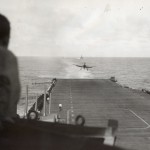
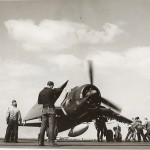
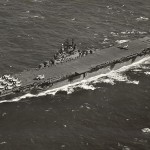
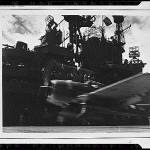
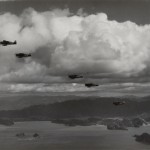
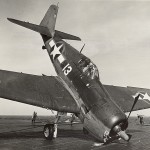
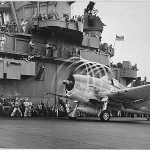
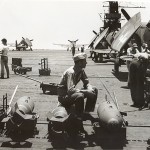
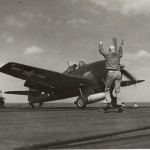
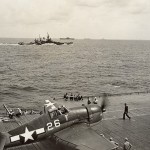
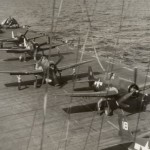
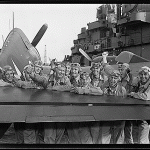


Leave a Reply